Fiona Fennessy, MD, PhD Receives Academy for Radiology & Biomedical Imaging Research Distinguished Investigator Award
 Recipients of This Award have Attained a Level of Accomplishment That Ranks Within the Top 10% of All Academic Radiology Faculty
Recipients of This Award have Attained a Level of Accomplishment That Ranks Within the Top 10% of All Academic Radiology Faculty
The BWH Department of Radiology is pleased to announce that another of our faculty members has received the Academy for Radiology & Biomedical Imaging Research Distinguished Investigator Award, Fiona Fennessy, MD, PhD. This prestigious honor recognizes individuals for their accomplishments in the field of medical imaging.
Dr. Fennessy has met all of the following criteria to be eligible for the award:
Dr. Fennessy will be inducted into the Academy’s Council of Distinguished Investigators during a ceremony that will be held in November at the Radiological Society of North America’s annual meeting.
Radiology Research Symposium 2019
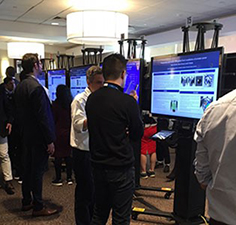 The BWH Department of Radiology held their 7th Annual Radiology Research Symposium on Thursday May 23, 2019 in the BWH Hale Building for Transformative Medicine. The conference was attended by 118 members of the Radiology department and showcased 47 posters representing the various facets of research in the department.
The BWH Department of Radiology held their 7th Annual Radiology Research Symposium on Thursday May 23, 2019 in the BWH Hale Building for Transformative Medicine. The conference was attended by 118 members of the Radiology department and showcased 47 posters representing the various facets of research in the department.
Department Chair Giles Boland, MD provided the opening remarks in which he marveled at the number of countries and diverse backgrounds of the researchers in the department and the richness of science provided by such a wide spectrum of perspectives and initiatives. Clare Tempany, MD, Vice Chair of Research provided a comprehensive update on research activities including honors and awards won by researchers in the department since last year's Symposium. Four researchers in the department, representing both clinical and radiological science provided updates on their ongoing research programs. The keynote address was given by Moritz Kircher, MD, PhD, Chair, DFCI Department of Imaging. Dr. Kircher spoke on his main area of research, Novel ultrasensitive ‘Surface-Enhance Resonance Raman Spectroscopy’ (SERRS) Nanoprobes for High Precision Cancer Imaging and Therapy. His talk was quite thought-provoking and touched on brand new breakthroughs in his lab.
Following lunch and the hour-long poster session, the three Diagnostic Radiology Residents currently on the department’s unique Clinician Scientist Research Pathway, shared their research projects as did the winner of the Senior Resident Research Day.
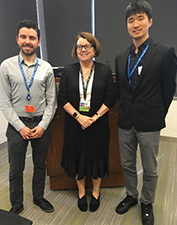 All attendees had an opportunity to vote for the winners of the poster session. This year’s winners were 1st Place to Kyungho Yoon, PhD for his poster Transcranial focused ultrasound-mediated neuromodulation in ovine model: Assessment of sonication parameters, and 2nd Place to Molly Charney for her poster Computer Aided Tumor Metabolic Signatures. Congratulations to our two winners!
All attendees had an opportunity to vote for the winners of the poster session. This year’s winners were 1st Place to Kyungho Yoon, PhD for his poster Transcranial focused ultrasound-mediated neuromodulation in ovine model: Assessment of sonication parameters, and 2nd Place to Molly Charney for her poster Computer Aided Tumor Metabolic Signatures. Congratulations to our two winners!
It was a great day celebrating Research and Education in the Radiology department, and plans are already underway for next year’s Symposium.
2019 Georg Charles de Hevesy Nuclear Medicine Pioneer Award from the SNMMI goes to Marcelo Di Carli, MD
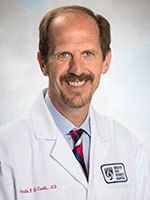 Marcelo Di Carli, MD, Chief of the Division of Nuclear Medicine and Molecular Imaging at BWH to be awarded the Georg Charles de Hevesy Nuclear Medicine Pioneer Award from the Society of Nuclear Medicine and Molecular Imaging (SNMMI) at the 2019 SNMMI annual meeting June 22-25 in Anaheim, CA. Each year, SNMMI presents the Georg Charles de Hevesy Nuclear Medicine Pioneer Award to an individual for outstanding contributions to the field of nuclear medicine. De Hevesy received the 1943 Nobel Prize in chemistry for his work in determining the absorption, distribution, metabolism and elimination of radioactive compounds in the human body. His work led to the foundation of nuclear medicine as a tool for diagnosis and therapy, and he is considered to be one of the fathers of nuclear medicine. SNMMI has given the de Hevesy Award every year since 1960 to honor groundbreaking discoveries and inventions in the field of nuclear medicine.
Marcelo Di Carli, MD, Chief of the Division of Nuclear Medicine and Molecular Imaging at BWH to be awarded the Georg Charles de Hevesy Nuclear Medicine Pioneer Award from the Society of Nuclear Medicine and Molecular Imaging (SNMMI) at the 2019 SNMMI annual meeting June 22-25 in Anaheim, CA. Each year, SNMMI presents the Georg Charles de Hevesy Nuclear Medicine Pioneer Award to an individual for outstanding contributions to the field of nuclear medicine. De Hevesy received the 1943 Nobel Prize in chemistry for his work in determining the absorption, distribution, metabolism and elimination of radioactive compounds in the human body. His work led to the foundation of nuclear medicine as a tool for diagnosis and therapy, and he is considered to be one of the fathers of nuclear medicine. SNMMI has given the de Hevesy Award every year since 1960 to honor groundbreaking discoveries and inventions in the field of nuclear medicine.
Dr. Di Carli was also honored this year with the BWH Department of Medicine Teaching Award.
Ron Kikinis, MD Honored with A. Clifford Barger Excellence in Mentoring Award from Harvard Medical School and Named a Senior Fellow by the International Society for Magnetic Resonance in Medicine (ISMRM)
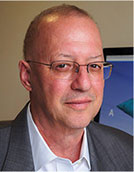 Ron Kikinis, MD, Director of the BWH Surgical Planning Laboratory was awarded a 2019 A. Clifford Barger Excellence in Mentoring Award from Harvard Medical School. The HMS Excellence in Mentoring Awards were established to recognize the value of quality mentoring relationships and the impact they have on professional development and career advancement in basic/clinical medicine, research, teaching, and administration.
Ron Kikinis, MD, Director of the BWH Surgical Planning Laboratory was awarded a 2019 A. Clifford Barger Excellence in Mentoring Award from Harvard Medical School. The HMS Excellence in Mentoring Awards were established to recognize the value of quality mentoring relationships and the impact they have on professional development and career advancement in basic/clinical medicine, research, teaching, and administration.
Dr. Kikinis was also named a Senior Fellow of the International Society for Magnetic Resonance in Medicine (ISMRM) at their annual meeting in May 2019 in Montreal.
Two Radiology Researchers Receive Mass General Brigham Innovation Discovery Grants
Bharti Khurans, MD and Alexander P. Lin, PhD of the BWH Department of Radiology were awarded 2019 Innovation Discovery Grants by Mass General Brigham’s Innovation Division. Mass General Brigham has developed this grant program to stimulate new inventive concepts, identify areas of commercially significant scientific strength, and accelerate the creation of new products from the innovations of all Mass General Brigham employees and faculty. Dr. Khurana won the grant for her project entitled Making the Invisible Visible: Bringing Intimate Partners Violence Into Focus and Dr. Lin’s project is titled Virtual Biopsy of Brain Injury: Deep Learning to Identify Diagnostic Metabolic Biomarkers. The focus of this year’s Innovation grants was using Artificial Intelligence to improve healthcare or healthcare delivery.
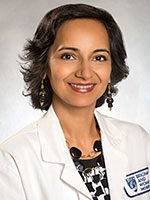
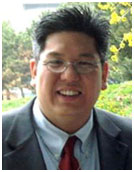
BWH Radiology Researcher’s Study Details New Way to Measure Millisecond Changes in Brain Function
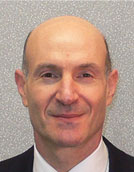 Brigham Bulletin: Study Details New Way to Measure Millisecond Changes in Brain Function
Brigham Bulletin: Study Details New Way to Measure Millisecond Changes in Brain Function
Tu Wins Presentation Prize at Discover Brigham 2018
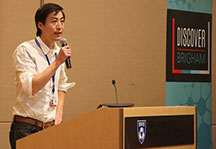 Yupeng Tu, PhD, a Research Fellow in the Molecular Biomarkers Nano-Imaging Lab (MBNI) in the Brigham and Women’s hospital department of Radiology received the Presentation Prize at this year’s Discover Brigham on November 7th. Dr. Tu has a PhD in Biochemistry from Brandeis University, and works on early diagnosis of diabetes complications. Dr. Tu presented his work on effective diagnostic tools for early detection of diabetic retinopathy. He has developed a nanoparticle ‘beacon’ to detect a transmembrane protein elevated in patients with this complication. Congratulations to Dr. Tu!
Yupeng Tu, PhD, a Research Fellow in the Molecular Biomarkers Nano-Imaging Lab (MBNI) in the Brigham and Women’s hospital department of Radiology received the Presentation Prize at this year’s Discover Brigham on November 7th. Dr. Tu has a PhD in Biochemistry from Brandeis University, and works on early diagnosis of diabetes complications. Dr. Tu presented his work on effective diagnostic tools for early detection of diabetic retinopathy. He has developed a nanoparticle ‘beacon’ to detect a transmembrane protein elevated in patients with this complication. Congratulations to Dr. Tu!
Seung-Schik Yoo, PhD, MBA, to Receive the 2018 Ferenc Jolesz Memorial Award
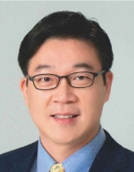 Seung-Schik Yoo, PhD, MBA, of Brigham and Women's Hospital, will receive the 2018 Ferenc Jolesz Memorial Award at the 6th International Symposium on Focused Ultrasound. The award was established in 2016 to honor the life of Ferenc Jolesz, a true pioneer in focused ultrasound. It is intended to recognize and encourage this same innovative spirit in mid-career researchers and clinicians who continue to advance focused ultrasound.
Seung-Schik Yoo, PhD, MBA, of Brigham and Women's Hospital, will receive the 2018 Ferenc Jolesz Memorial Award at the 6th International Symposium on Focused Ultrasound. The award was established in 2016 to honor the life of Ferenc Jolesz, a true pioneer in focused ultrasound. It is intended to recognize and encourage this same innovative spirit in mid-career researchers and clinicians who continue to advance focused ultrasound.
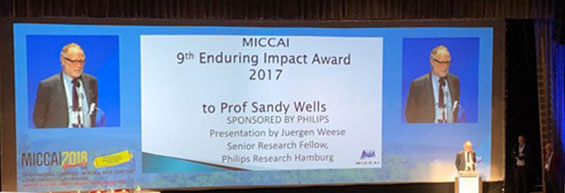
Alexander P. Lin, PhD’s research featured in an article in the Boston Herald
 BWH Radiology Researcher, Alexander P. Lin, PhD’s research in gender differences in brain injuries, featured in an article in the Boston Herald Gender Differences Eyed in Concussions
BWH Radiology Researcher, Alexander P. Lin, PhD’s research in gender differences in brain injuries, featured in an article in the Boston Herald Gender Differences Eyed in Concussions
Radiologists Detect Injury Patterns of Intimate Partner Abuse
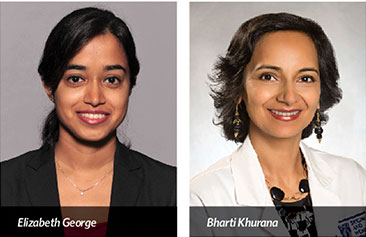
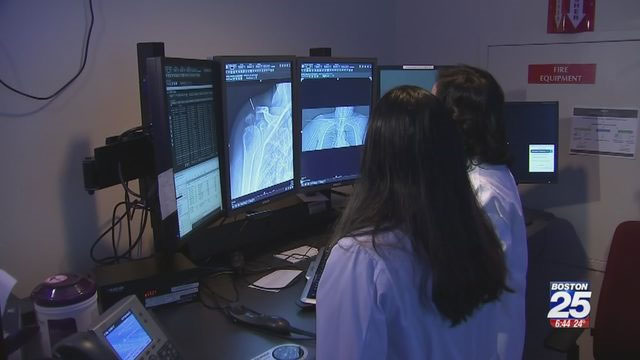
Nathan McDannold, PhD is featured in an article in Wired.com
 Nathan McDannold, PhD’s Focused Ultrasound Laboratory is featured in an article in Wired.com stressing the significance of new and interesting ways Focused Ultrasound is being used to solve intractable medical problems like breaking the blood brain barrier and other tissues previously impenetrable to drug delivery. Read the article.
Nathan McDannold, PhD’s Focused Ultrasound Laboratory is featured in an article in Wired.com stressing the significance of new and interesting ways Focused Ultrasound is being used to solve intractable medical problems like breaking the blood brain barrier and other tissues previously impenetrable to drug delivery. Read the article.
Wonhye Lee, PhD will receive the 2018 Young Investigator Award
Wonhye Lee, PhD, an Instructor in the department of Radiology, will receive the 2018 Young Investigator Award from the Society for Brain Mapping Neurotherapeutics for his contributions in Focused Ultrasound-mediated brain neuromodulation. Information on the award here.
A Delicate Crossing: Controller Developed to Open the Blood-Brain Barrier with Precision
Nathan J. McDannold, PhD’s work in MR Guided Focused Ultrasound published in The Proceedings of the National Academy of Sciences
 The blood-brain barrier – the semi-permeable membrane that surrounds the brain – offers important protection for a delicate organ, but in some cases, clinicians need to get past the barrier to deliver vital drugs to treat the brain. Researchers at Brigham and Women’s Hospital are investigating a way to temporarily loosen the blood-brain barrier to deliver drugs with the assistance of microbubbles. In a new advancement, they have developed a system in preclinical models that offers a finer degree of control – and, therefore, safety – in opening the barrier. Their findings are published this week in The Proceedings of the National Academy of Sciences.
The blood-brain barrier – the semi-permeable membrane that surrounds the brain – offers important protection for a delicate organ, but in some cases, clinicians need to get past the barrier to deliver vital drugs to treat the brain. Researchers at Brigham and Women’s Hospital are investigating a way to temporarily loosen the blood-brain barrier to deliver drugs with the assistance of microbubbles. In a new advancement, they have developed a system in preclinical models that offers a finer degree of control – and, therefore, safety – in opening the barrier. Their findings are published this week in The Proceedings of the National Academy of Sciences.
“We want to be able to monitor our ability to open the blood-brain barrier in real-time by listening to echoes – this could give us immediate information on the stability of the microbubbles oscillations and give us fast, real-time control and analysis,” said lead author Tao Sun, a PhD candidate in the labs of co-authors Nathan McDannold, PhD, in the Focused Ultrasound Laboratory in the Department of Radiology at BWH, and Eric Miller, PhD, chair and professor in the Department of Electrical and Computer Engineering at Tufts.
McDannold and his colleagues have been working for years on using focused ultrasound and microbubbles to disrupt the blood-brain barrier and deliver drugs to the brain. However, a major challenge for translating research advancements in this area into clinical impact has been a lack of a reliable way to get instantaneous feedback on how well microbubbles are vibrating inside the brain. Microbubbles can help temporarily open the blood-brain barrier without incision or radiation, but if these bubbles destabilize and collapse, they can damage the critical vasculature in the brain.
In the lab, the research team used a rat model to develop a closed-loop controller – a device that can give them a metaphorical window into the brain. By placing sensors on the outside of the brain that act like secondary microphones, the research team could listen to ultrasound echoes bouncing off the microbubbles to determine how stable the bubbles were. They could then tune and adjust their ultrasound input instantly to stabilize the bubbles, excite them to open the barrier, and deliver a drug of a predefined dose, while maintaining safe ultrasound exposure. The team tested the approach in healthy rats as well as an animal model of glioma brain cancer.
Further research will be needed to adapt the technique for humans, but the approach could offer improved safety and efficacy control for human clinical trials, which are now underway in Canada.
This work was supported by National Institutes of Health P01 CA174645.
Paper cited: Sun T et al. “Closed-loop control of targeted ultrasound drug delivery across the blood-brain/tumor barriers in a rat glioma model” Proceedings of the National Academy of Sciences doi:10.1073/pnas.1713328114
Lin Awarded Alzheimer’s Association Research Grant
 Alexander Lin, PhD, director of the Center for Clinical Spectroscopy in the Department of Radiology, recently received a $150,000 research grant from the Alzheimer’s Association to study the differences between the neurodegenerative disease chronic traumatic encephalopathy (CTE) and other forms of dementia, with the goal of translating the findings for future clinical and research applications.
Alexander Lin, PhD, director of the Center for Clinical Spectroscopy in the Department of Radiology, recently received a $150,000 research grant from the Alzheimer’s Association to study the differences between the neurodegenerative disease chronic traumatic encephalopathy (CTE) and other forms of dementia, with the goal of translating the findings for future clinical and research applications.
Lin and his team plan to study a group of retired National Football League (NFL) players, who have high rates of CTE, and compare them with people who have Alzheimer’s disease and with those of the same age who have healthy brain function.
Because many of the symptoms of CTE are similar to the symptoms of Alzheimer’s disease, it’s exceptionally difficult for doctors to distinguish between CTE and Alzheimer’s disease or other causes of dementia until a brain autopsy is performed, according to the Alzheimer’s Association. Lin and researchers will collect additional information about the brain’s blood flow and brain chemistry, along with the imaging to identify patterns that are unique to CTE.
The Alzheimer’s Association is the leading voluntary health organization in Alzheimer’s care, support and research. The association works on a global, national and local level to provide care and support for all those affected by Alzheimer’s and other dementias.
Preiswerk Receives Second Best Abstract Award
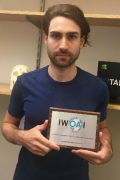
Frank Preiswerk, PhD, of the Department of Radiology, earned the Second Best Abstract Award at the 2018 International Workshop on Osteoarthritis Imaging (IWOAI) for his work on detection of bone marrow lesion (BML) segmentation using deep learning, a subset of artificial intelligence and machine learning.
Preiswerk’s project examined whether an advanced computer algorithm could identify BML segmentation as accurately as experienced radiologists – ultimately finding that both methods were nearly equivalent. Preiswerk and his team noted that, given the time and resources necessary for a human reader to analyze these scans, deep learning could yield substantial time and cost savings.
A computer scientist by training, Preiswerk’s broader research focus looks at how machine learning algorithms can be used to improve medical imaging and medical image analysis.
The IWOAI provides opportunities for osteoarthritis investigators to discuss issues related to imaging of osteoarthritis.
Radiology Research Symposium 2018
The BWH Department of Radiology held their 6th Annual Radiology Research Symposium on Thursday May 24, 2018 at the Longwood Inn Conference Center. The conference was attended by 115 members of the Radiology department and showcased 38 posters representing the various facets of research in the department. Giles Boland, MD, Department Chair reflected on his almost two years as Chair of the department, followed by Clare Tempany, MD, Vice Chair of Research who provided a comprehensive update on research activities including honors and awards won by researchers in the department since the 2017 Symposium. Four clinical researchers in the department shared presentations on their work and the Keynote was provided by Stephen Wiviott, MD, the newly appointed Executive Director of the Partners Clinical Trial Office.
Following lunch and the hour long poster session, the four Diagnostic Radiology Residents currently on the Clinician Scientist Research Pathway within the department shared their research projects, as did the winner of the Senior Resident Research Day.
All attendees get an opportunity to vote for the winners of the poster session. This years’ winners were 1st Place to Frank Preiswerk, PhD, for his poster, Spot the AI, and 2nd Place to Wonhye Lee, PhD, for his poster Biomimetic Inflammatory Dermatitis Model by 3D Bioprinting.
It was a great day celebrating Research and Education in the Radiology department, and plans are already underway for next year’s Symposium!
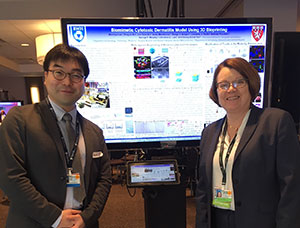
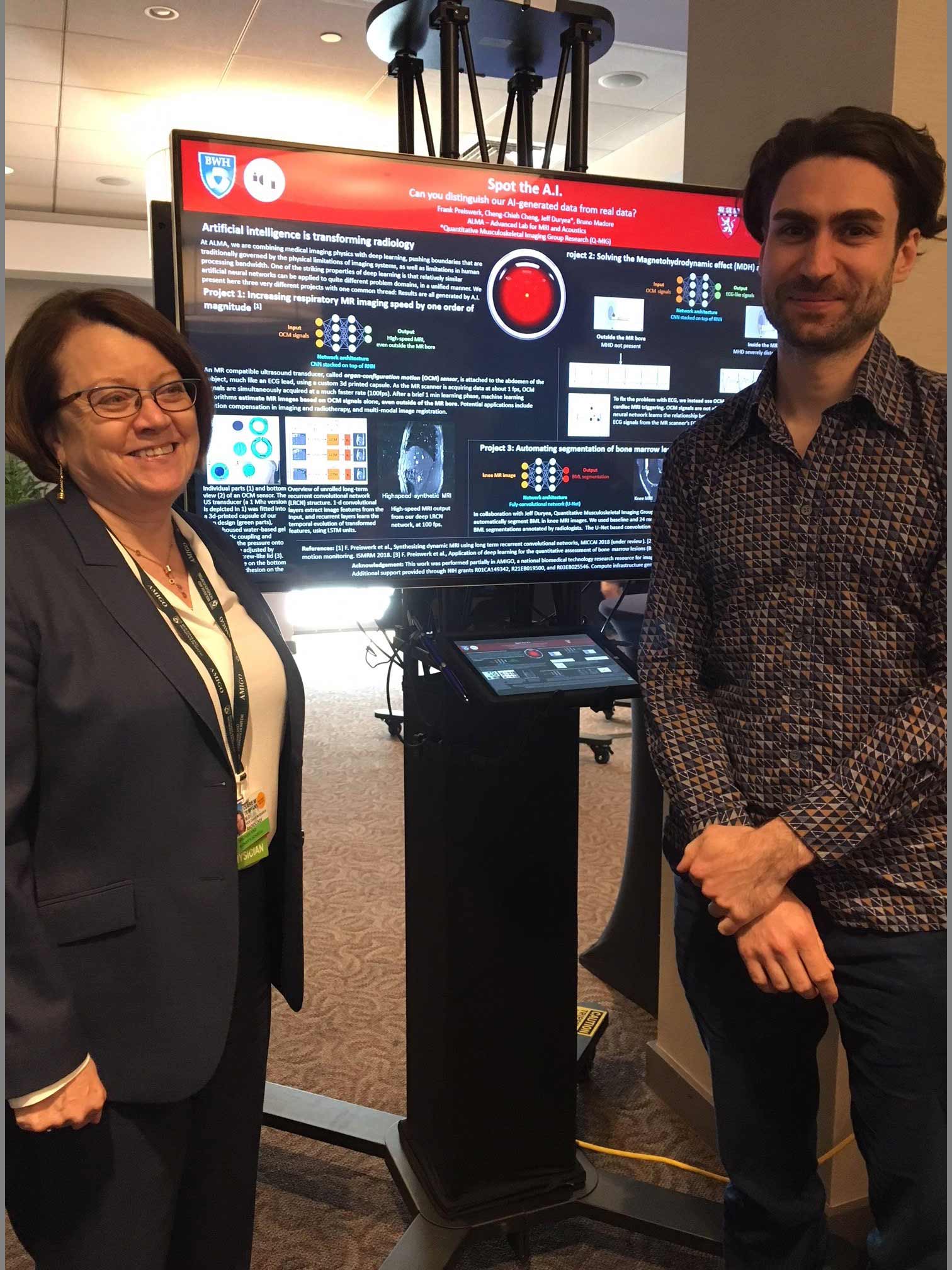
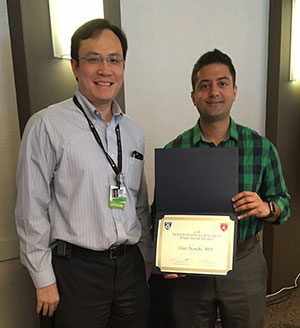
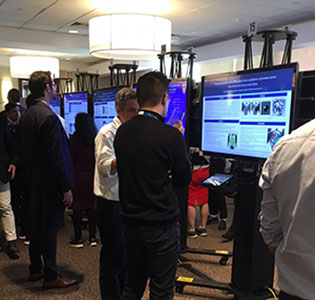
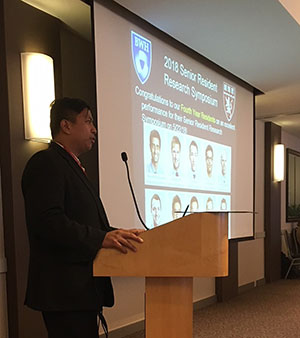
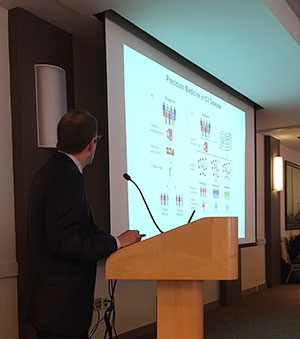
Mizuki Nishino, MD, MPH and Raul San Jose Estepar, PhD are Recipients of the Academy for Radiology & Biomedical Imaging Research Distinguished Investigator Award
Recipients of This Award have Attained a Level of Accomplishment That Ranks Within the Top 10% of All Academic Radiology Faculty
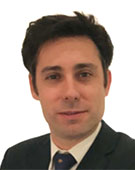
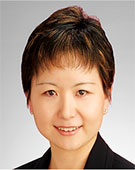 The BWH Department of Radiology is pleased to announce that two of our faculty members have received the Academy for Radiology & Biomedical Imaging Research Distinguished Investigator Award, Mizuki Nishino, MD, MPH and Raul San Jose Estepar, PhD. This prestigious honor recognizes individuals for their accomplishments in the field of medical imaging.
The BWH Department of Radiology is pleased to announce that two of our faculty members have received the Academy for Radiology & Biomedical Imaging Research Distinguished Investigator Award, Mizuki Nishino, MD, MPH and Raul San Jose Estepar, PhD. This prestigious honor recognizes individuals for their accomplishments in the field of medical imaging.
Drs. Nishino and San Jose Estepar have met the following criteria:
Recipients will be inducted into the Academy’s Council of Distinguished Investigators during a ceremony that will be held in November at the Radiological Society of North America’s annual meeting.
2017 Enduring Impact Award
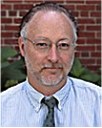 William M. Wells, III, PhD (Sandy), Professor of Radiology at Brigham and Women’s Hospital, has been awarded the 2017 Enduring Impact Award from The Medical Image Computing and Computer Assisted Intervention Society (The MICCAI Society). Among many other achievements, Dr. Wells is recognized for the STAPLE algorithm, Simultaneous Truth and Performance Level Estimation for the validation of image segmentation.
William M. Wells, III, PhD (Sandy), Professor of Radiology at Brigham and Women’s Hospital, has been awarded the 2017 Enduring Impact Award from The Medical Image Computing and Computer Assisted Intervention Society (The MICCAI Society). Among many other achievements, Dr. Wells is recognized for the STAPLE algorithm, Simultaneous Truth and Performance Level Estimation for the validation of image segmentation.
Ali Hafezi-Moghadam MD, PhD’s work published in The FASEB Journal
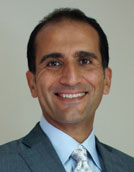 Ali Hafezi-Moghadam, MD, PhD’s article titled Cathepsin B-mediated CD18 shedding regulates leukocyte recruitment from angiogenic vessels was published in the September 13, 2017 issue of the FASEB Journal. Dr. Hafezi-Moghadam and his colleagues resolved the apparent discrepancy whether Cathepsin B increases or decreases angiogenesis both of which findings were reported in previous research papers. Dr. Hafezi-Moghadam and his lab introduced the differential role of immune cell migration in this context, which the editors of the FASEB Journal found to be quite news worthy. Read the abstract.
Ali Hafezi-Moghadam, MD, PhD’s article titled Cathepsin B-mediated CD18 shedding regulates leukocyte recruitment from angiogenic vessels was published in the September 13, 2017 issue of the FASEB Journal. Dr. Hafezi-Moghadam and his colleagues resolved the apparent discrepancy whether Cathepsin B increases or decreases angiogenesis both of which findings were reported in previous research papers. Dr. Hafezi-Moghadam and his lab introduced the differential role of immune cell migration in this context, which the editors of the FASEB Journal found to be quite news worthy. Read the abstract.
The Fifth Annual Radiology Research Symposium
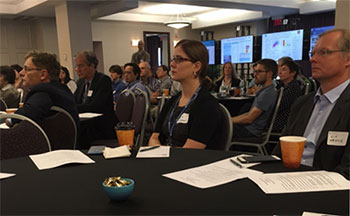 The fifth annual Radiology Research Symposium was held on Friday June 23, 2017 at the Longwood Inn Conference Center. There were 25 posters presented representing a wide variety of Radiology research labs at Brigham and Women’s Hospital. Giles Boland, MD, the Chair of the Radiology Department gave opening remarks as he addressed his first research Symposium since taking over as Chair of the department in August 2016. Clare Tempany, MD, Vice Chair of Research in the department provided an update on the department’s research enterprise, including an overview of grant funding, numbers of grant applications in the past year, industry sponsored research in the department and recognition of accolades and award winners since the last Symposium.
The fifth annual Radiology Research Symposium was held on Friday June 23, 2017 at the Longwood Inn Conference Center. There were 25 posters presented representing a wide variety of Radiology research labs at Brigham and Women’s Hospital. Giles Boland, MD, the Chair of the Radiology Department gave opening remarks as he addressed his first research Symposium since taking over as Chair of the department in August 2016. Clare Tempany, MD, Vice Chair of Research in the department provided an update on the department’s research enterprise, including an overview of grant funding, numbers of grant applications in the past year, industry sponsored research in the department and recognition of accolades and award winners since the last Symposium.
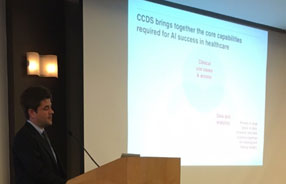 The keynote address was provided by Mark Michalski, MD, the Executive Director of the Center for Clinical Data Science which is supported and funded by both MGH and BWH, and by financial support from General Electric Healthcare. Dr. Michalski’s talk, Machine Learning in Medical Imaging was very well received, especially as he emphasized the Center’s goal of working very closely with the BWH Radiology research community.
The keynote address was provided by Mark Michalski, MD, the Executive Director of the Center for Clinical Data Science which is supported and funded by both MGH and BWH, and by financial support from General Electric Healthcare. Dr. Michalski’s talk, Machine Learning in Medical Imaging was very well received, especially as he emphasized the Center’s goal of working very closely with the BWH Radiology research community.
Presentations followed by three faculty researchers in the department, Fiona Fennessy, MD, PhD spoke about Multi-omics in Prostate Cancer, Sharmila Dorbala, MD, MPH presented her research in Molecular Imaging of Cardiac Amyloidosis, and C-F Westin, PhD gave a history and Physics lesson in his talk Revisiting Mathematics in MRI Physics.

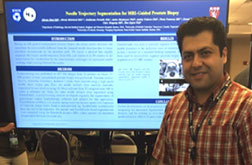 After an extended lunch and poster viewing (and scoring session), the remaining hour of the Symposium was dedicated to providing a connection between the Education Division of the department with the Research Division. Glenn Gaviola, MD, Program Director of the BWH DR Residency program and William Mayo-Smith, MD, Vice Chair of Education gave their Educational Perspective on Radiology Training and Research. Sharath Bhagavatula, MD and Jeffrey Guenette, MD, the first two DR residents on the new 3-2 Clinician Scientist Research Pathway, presented their respective research projects, Photoacoustic Image Guidance for Percutaneous Interventions and Advance Neuroimaging of PTSD, Concussion, and Repetitive Subconcussive Head Impacts. The last presentation of the day was by Shanna Matalon, MD, one of two Senior Resident Research Award winners, on her research project Procedural Training in Radiology Residency: Variability in the Use of Simulation.
After an extended lunch and poster viewing (and scoring session), the remaining hour of the Symposium was dedicated to providing a connection between the Education Division of the department with the Research Division. Glenn Gaviola, MD, Program Director of the BWH DR Residency program and William Mayo-Smith, MD, Vice Chair of Education gave their Educational Perspective on Radiology Training and Research. Sharath Bhagavatula, MD and Jeffrey Guenette, MD, the first two DR residents on the new 3-2 Clinician Scientist Research Pathway, presented their respective research projects, Photoacoustic Image Guidance for Percutaneous Interventions and Advance Neuroimaging of PTSD, Concussion, and Repetitive Subconcussive Head Impacts. The last presentation of the day was by Shanna Matalon, MD, one of two Senior Resident Research Award winners, on her research project Procedural Training in Radiology Residency: Variability in the Use of Simulation.
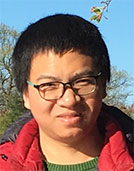 The last fifteen minutes of the Symposium were dedicated to the announcement of the winners of the poster session. The first prize of $500 towards research lab expenses went to Min Zhou for his poster Magnetic Resonance Spectroscopy Treatment Response and Progression Free Survival in IDH-mutant Gliomas. The second prize of $250 towards research lab expenses went to Alireza Ziaei, MD for his poster Needle Trajectory Segmentation for MRI Guided Prostate Biopsy. Congratulations to our two winners and to all the speakers and poster presenters for an extremely well-received day of research sharing.
The last fifteen minutes of the Symposium were dedicated to the announcement of the winners of the poster session. The first prize of $500 towards research lab expenses went to Min Zhou for his poster Magnetic Resonance Spectroscopy Treatment Response and Progression Free Survival in IDH-mutant Gliomas. The second prize of $250 towards research lab expenses went to Alireza Ziaei, MD for his poster Needle Trajectory Segmentation for MRI Guided Prostate Biopsy. Congratulations to our two winners and to all the speakers and poster presenters for an extremely well-received day of research sharing.
Seung-Schik Yoo, PhD, MBA and Jeffrey Duryea, PhD Honored with the Academy of Radiology Research’s 2017 Distinguished Investigator Award
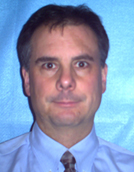
 The BWH Department of Radiology is pleased to announce that Seung-Schik Yoo, PhD, MBA and Jeffrey Duryea, PhD have been selected to receive an Academy of Radiology Research’s 2017 Distinguished Investigator Award.
The BWH Department of Radiology is pleased to announce that Seung-Schik Yoo, PhD, MBA and Jeffrey Duryea, PhD have been selected to receive an Academy of Radiology Research’s 2017 Distinguished Investigator Award.
This prestigious honor recognizes individuals for their accomplishments in the field of medical imaging. "The recipients of this Award have made significant contributions to the field of imaging research and are in the top 10% of Radiology Department faculty nationwide", remarked Reed A. Omary, MD, MS, Co-Chair of the Academy's Distinguished Investigator Council. Dr. Omary also noted that all of the honorees have met the following criteria:
Young Investigator Cum Laude Award of the ISMRM
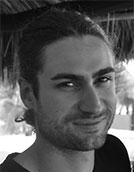 Frank Preiswerk, PhD, was awarded the Young Investigator Cum Laude Award of the ISMRM for his pioneering work on "Hybrid MRI-Ultrasound Acquisitions, and Scannerless Real-Time Imaging”. Dr. Preiswerk is a postdoctoral fellow at the National Center for Image Guided Therapy, Brigham and Women’s Hospital, Harvard Medical School, in the Advanced Lab for MRI and Acoustics. Each year, the Young Investigator Awards recognize outstanding research by trainees and junior members of the ISMRM. The award ceremony took place at this year’s ISMRM annual meeting in Honolulu, HI, in April 2017.
Frank Preiswerk, PhD, was awarded the Young Investigator Cum Laude Award of the ISMRM for his pioneering work on "Hybrid MRI-Ultrasound Acquisitions, and Scannerless Real-Time Imaging”. Dr. Preiswerk is a postdoctoral fellow at the National Center for Image Guided Therapy, Brigham and Women’s Hospital, Harvard Medical School, in the Advanced Lab for MRI and Acoustics. Each year, the Young Investigator Awards recognize outstanding research by trainees and junior members of the ISMRM. The award ceremony took place at this year’s ISMRM annual meeting in Honolulu, HI, in April 2017.
In the future, Dr. Preiswerk, together with his mentor Dr. Bruno Madore and team, will investigate the use of their hybrid MRI and ultrasound platform in a number of promising applications, including MR-thermometry for high-intensity focused ultrasound (HIFU) treatments, cardiac MRI and multi-modality image registration and fusion.
BWH Radiology Researcher named as one of the 2017 Medtech Boston 40 under 40 Healthcare Innovators
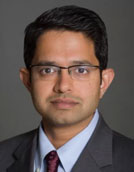 Jayender Jagadeesan, PhD, an Assistant Professor working in the Surgical Planning Lab in the Radiology department at Brigham and Women’s hospital, has been named one of the 2017 Medtech Boston 40 Under 40 Healthcare Innovators for his work in surgical robotics and image-guided procedures in the BWH AMIGO Suite.
Jayender Jagadeesan, PhD, an Assistant Professor working in the Surgical Planning Lab in the Radiology department at Brigham and Women’s hospital, has been named one of the 2017 Medtech Boston 40 Under 40 Healthcare Innovators for his work in surgical robotics and image-guided procedures in the BWH AMIGO Suite.
Oliver Jonas, PhD Wins BRI Director’s Transformative Award
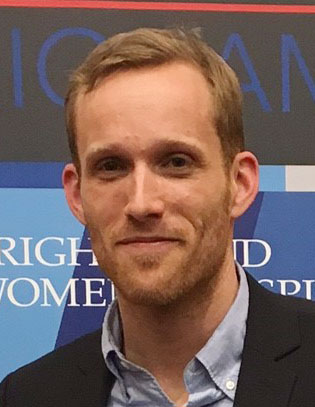 Oliver Jonas, PhD, Assistant Professor of Radiology, Lab Director of the Laboratory for Bio-Micro Devices was awarded the two year $500,000 BRI Director’s Transformative Award for his ground-breaking research in “lab-in-a-patient” micro-devices for next-generation precision medicine for cancer treatment. Read about Dr. Jonas’ innovative research here.
Oliver Jonas, PhD, Assistant Professor of Radiology, Lab Director of the Laboratory for Bio-Micro Devices was awarded the two year $500,000 BRI Director’s Transformative Award for his ground-breaking research in “lab-in-a-patient” micro-devices for next-generation precision medicine for cancer treatment. Read about Dr. Jonas’ innovative research here.
Yoo Earns BRAIN Initiative Grant
 Seung-Schik Yoo, PhD, MBA, of the Department of Radiology and Surgical Planning Laboratory, has been awarded a grant as part of the Brain Research through Advancing Innovative Neurotechnologies (BRAIN) Initiative, a neuroscience research program sponsored by the National Institutes of Health.
Seung-Schik Yoo, PhD, MBA, of the Department of Radiology and Surgical Planning Laboratory, has been awarded a grant as part of the Brain Research through Advancing Innovative Neurotechnologies (BRAIN) Initiative, a neuroscience research program sponsored by the National Institutes of Health.
Yoo is being recognized for his work, "Wearable Transcranial Focused Ultrasound (FUS) System for Region-specific Functional Neuromodulation." With image-guidance techniques, FUS allows for noninvasive, transcranial delivery of acoustic energy to superficial and deep brain regions, with excellent spatial selection. Yoo and his colleagues will develop and implement a wearable, image-guided transcranial FUS (tFUS) technique to temporarily elicit or suppress region-specific brain functions of the sensorimotor pathways in preclinical models.
This new technique will noninvasively modulate specific brain areas with enhanced depth penetration and spatial resolution, providing a new method to study the connection between brain activity and behavior, potentially presenting novel opportunities for treating neurological and psychiatric disorders.
The White House BRAIN Initiative is a collaborative, public-private research initiative that was announced by the Obama administration in 2013 with the goal of supporting the development and application of innovative technologies that can create a dynamic understanding of brain function.
McDannold Named Fellow of the Acoustical Society of America
 Congratulations to Nathan J. McDannold, PhD, Director of the Therapeutic Ultrasound Lab in the Department of Radiology for the prestigious honor of being elected to Fellowship status of the Acoustical Society of America (ASA). Dr. McDannold was honored for his contributions to therapeutic ultrasound using MRI guided Focused Ultrasound as a non-invasive treatment for uterine fibroids, bone metastases in cancer patients, prostate cancer, brain tumors and essential tremor, amongst other disease areas. Honorary Fellowships of the ASA are bestowed on those who have attained eminence in acoustics or who have rendered outstanding service to acoustics. Past Fellows have included Thomas A. Edison (1929), Leo L. Beranek (1994) and Amar G. Bose (2011). The last time this honor was given in the field of therapeutic ultrasound was in 2009 to Kullervo Hynynen, PhD, the prior director of the BWH Department of Radiology Therapeutic Ultrasound Lab.
Congratulations to Nathan J. McDannold, PhD, Director of the Therapeutic Ultrasound Lab in the Department of Radiology for the prestigious honor of being elected to Fellowship status of the Acoustical Society of America (ASA). Dr. McDannold was honored for his contributions to therapeutic ultrasound using MRI guided Focused Ultrasound as a non-invasive treatment for uterine fibroids, bone metastases in cancer patients, prostate cancer, brain tumors and essential tremor, amongst other disease areas. Honorary Fellowships of the ASA are bestowed on those who have attained eminence in acoustics or who have rendered outstanding service to acoustics. Past Fellows have included Thomas A. Edison (1929), Leo L. Beranek (1994) and Amar G. Bose (2011). The last time this honor was given in the field of therapeutic ultrasound was in 2009 to Kullervo Hynynen, PhD, the prior director of the BWH Department of Radiology Therapeutic Ultrasound Lab.
Clare Tempany, MD speaks with The Boston Herald
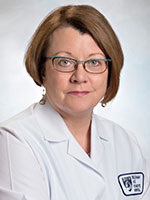 Clare Tempany, MD speaks with the Boston Herald about testing a new technology to treat prostate cancer. Read the article.
Clare Tempany, MD speaks with the Boston Herald about testing a new technology to treat prostate cancer. Read the article.
Seltzer Named Fellow in Health Care Policy
Steven Seltzer, MD, BWH Radiology Chair Emeritus, Philip H Cook Distinguished Professor of Radiology at HMS, and past chair of the Board of Trustees of the Brigham and Women’s Physician Organization, was recently announced as the inaugural Fellow in Health Care Policy by the Academy of Radiology Research (ARR). Dr Seltzer also serves as the chair of the Coalition for Imaging and Bioengineering Research, an advocacy subsidiary of ARR. As a Fellow, he will be deeply involved with the Academy’s Washington DC-based national education and advocacy efforts to encourage additional federal funding for research in diagnostic radiology and image-guided therapy. At BWH, Dr Seltzer will continue his ongoing work in physician mentorship and education. Seltzer’s research interests have been in perception and psychophysics, with a focus on improving the understanding of how radiologists detect, locate and classify abnormalities on diagnostic images. He has published over 100 peer-reviewed research manuscripts on these topics.
Image-guided Video-assisted Surgery Helps Remove Small Lung Masses
Real-time image-guided video-assisted thoracic surgery procedures are helping remove small lung cancers less invasively at Brigham and Women’s Hospital. Read the article.
Clare Tempany-Afdhal, MD highlighted in article in The Irish Times
The Irish Times published an article titled Irish Innovator in use of Images to Tailor Surgery highlighting Dr. Clare Tempany-Afdhal, Ferenc Jolesz Chair of Radiology Research in the BWH Department of Radiology and her work in image guided therapy, particularly in the field of prostate cancer. Read the article.
Atul Shinagare, MD Awarded the DFCI Eleanor and Miles Shore Fellowship
Atul Shinagare, MD, Assistant Professor in the department of Radiology at BWH and DFCI and at Harvard Medical School has been awarded the DFCI Eleanor and Miles Shore Fellowship for academic year 2017. The Shore Fellowship award is a stipend offered to junior faculty at the most vulnerable point in their academic careers to support academic activities. The awards may be used for protected time from clinical or laboratory responsibilities to pursue academic work, including writing a grant application, preparing a manuscript, completing a research project, or developing a new curriculum. Funds awarded can also be used for additional laboratory assistance at a time when the junior faculty member does not yet have independent funding. The Shore Fellowship is an extremely prestigious honor and indicates the selection committee at Harvard Medical School’s belief in the promise of the junior investigator and the impressiveness of their proposal for their scientific research.
2016 BWH Center for Faculty Development & Diversity (CFDD) Pillar Awards
Faculty members in academic medical centers serve in multiple capacities as mentors, innovators, collaborators and community leaders. The BWH CFDD established the Pillar Awards to recognize BWHC faculty for achievement in one, or more, of the four pillars of academic life: clinical care, research, education and community service. In the fourth year of this prestigious program one of the Radiology Research faculty members was recognized for his outstanding achievements. Sam Patz, PhD, Professor of Radiology, Harvard Medical School and Director of the Advances in Pulmonary Functional Imaging Research Lab in the BWH Department of Radiology was awarded the prize for Research Innovation for his groundbreaking work in developing new MRI methods in using hyperpolarized xenon gas MRI to produce maps of pulmonary function, developing a lightweight, portable MRI device for the ICU and advancing the field of Magnetic Resonance Elastography of the brain to detect and stage gliomas and diagnose and stage Alzheimer’s disease.
Bruno Madore, PhD and Marcelo Fernando Di Carli, MD Honored with the Academy of Radiology Research’s 2016 Distinguished Investigator Award
The BWH Department of Radiology is pleased to announce that Bruno Madore, PhD and Marcelo Fernando Di Carli, MD have been selected to receive an Academy of Radiology Research’s 2016 Distinguished Investigator Award.
This prestigious honor recognizes individuals for their accomplishments in the field of medical imaging. "The recipients of this Award have made significant contributions to the field of imaging research and are in the top 10% of Radiology Department faculty nationwide", remarked Reed A. Omary, MD, MS, Co-Chair of the Academy's Distinguished Investigator Council. Dr. Omary also noted that all of the honorees have met the following criteria:
All recipients of this award will be inducted into the Academy's Council of Distinguished Investigators during a ceremony that will be held in November at the Radiological Society of North America's annual meeting.
Viviany Taqueti, MD, MPH, Recipient of Two Career Development Awards
Viviany Taqueti, MD, an Instructor in the department of Radiology at BWH and Harvard Medical School has been awarded two career development awards in recent months. In March she was notified that she was awarded a position as a Building Interdisciplinary Research Careers in Women’s Health (BIRCWH) Program Scholar from the Harvard-wide BIRCWH Program. This award is an NIH K12 award which includes funds for salary support and research-related costs, including an annual trip to the NIH BIRCWH Scholars meeting in Washington, DC. In April, Dr. Taqueti was notified that she was selected as a 2016 recipient of the BWH Minority Faculty Career Development Award (MFCDA). Both awards are recognition of Dr. Taqueti’s accomplishments and well-articulated vision of her future research career.
Jeremy Wortman, MD Awarded a 2016 Roentgen Resident/Fellow Research Award from the RSNA R&E Foundation
Jeremy Wortman, MD, a Resident in Diagnostic Radiology at BWH was awarded a prestigious Roentgen Resident/Fellow Research award from the Radiological Society of North America (RSNA) R&E Foundation. The Roentgen Resident/Fellow Research Award is awarded annually to recognize and encourage outstanding residents and fellows in radiologic research as evidenced by 1) presentations of scientific papers at regional or national meetings, 2) publication of scientific papers in peer-reviewed journals, 3) receipt of a research grant or contributions to the success of a research program within their department and 4) any other research activities. Dr. Wortman excelled in all of these areas during his Radiology residency at BWH. He will be joining the BWH Emergency Radiology department as an attending as of July 1, 2016.
BWH Innovation Hub Hosts an Innovation Series for the BWH Department of Radiology
Over a six-month period the BWH Innovation Hub led by Executive Director Lesley Solomon, MBA held an Innovation Series for the BWH department of Radiology to provide a forum and seed funding mechanism to develop commercializable ideas for new products and services based on identified clinical problems. The Innovation Series included a problem pitch session, a solution build session and then two funding presentation sessions. Over the course of the Series, three commercializable projects were identified and provided with seed funding to build prototypes and develop business plans for further funding opportunities. The three award recipients all from the department of Radiology were Paul Shyn, MD for his project Needle device to reduce bleeding in liver biopsies, Ritu Gill, MD, MPH for her project Nodule monitoring tool for lung cancer and Alex P. Lin, PhD for his project MR Spectroscopy: Virtual Biopsy. Dr. Lin’s project has led to a new spin-off company BrainSpec which received first place in the Tufts New Business Venture competition and was a finalist in the Harvard Business School New Ventures Competition.
McDannold Receives Ferenc Jolesz Memorial Award
Nathan J. McDannold, PhD, director of Therapeutic Ultrasound Lab in the Department of Radiology, was recently named the Ferenc Jolesz Memorial Award recipient by the Focused Ultrasound Foundation (FUS).
McDannold’s research concentrates on focused ultrasound technology—an early-stage, noninvasive therapy that uses ultrasonic energy to target tissue deep in the body, without incisions or radiation. This technique has been tested at BWH on tumors in the breast, uterus, bone, prostate, brain and for functional neurosurgery.
The award honors Jolesz’s memory by recognizing and encouraging innovative spirit in mid-career researchers and clinicians who continue to advance focused ultrasound. The mission of FUS is to accelerate the development of applications for focused ultrasound and the adoption of the technology as a standard of care.
BWH Researchers Articles Published in Radiology
Two articles by teams of researchers in the BWH department of Radiology, as part of the NIH funded National Center for Image Guided Therapy (NIH Award P41 EB015898) regarding research conducted in the AMIGO suite at BWH were recently published in the prestigious journal Radiology:
Intraoperative Supine Breast MR Imaging to Quantify Tumor Deformation and Detection of Residual Breast Cancer: Preliminary Results
Eva C. Gombos MD, Jagadeesan Jayender PhD, Danielle M. Richman MS, MD, Diana L. Caragacianu MD, Melissa A. Mallory MD, Ferenc A. Jolesz MD, and Mehra Golshan MD.
Radiology | Jun 22, 2016
Interventional MR Imaging for Deep-Brain Stimulation Electrode Placement
Thanissara Chansakul MD, Paul N. Chen, Jr MD, PharmD, Thomas C. Lee MD, and Travis Tierney MD, PhD.
Radiology | Jun 20, 2016
BWH Radiology Research Symposium Held on June 3, 2016
The 10th Annual Radiology Research off-site Retreat took place on Friday June 3, 2016 at the Longwood Inn Conference Center. This was the fourth year the retreat was billed as the Research Symposium as a poster session showcasing the diverse research interests of the department were showcased.
The Symposium attracted over 100 attendees from the BWH Radiology department, and for the first time, a two-hour lunch and post-lunch session was opened to the Residents and Clinical Fellows of the department so they would be able to participate.
The Symposium was entitled “Reflecting Back, Advancing Forward” and featured a keynote address by outgoing Department Chair, Steven Seltzer, MD. Dr. Seltzer reflected on his 19 years as department Chair and the incredible advances in the science and funding levels of many areas of diagnostic and interventional Radiology that were achieved by the department during his tenure. He also discussed the strategic growth areas in imaging research and how well positioned the department is to capitalize on these areas of funding and scientific growth, particularly in functional and molecular imaging, image guided interventions and information technology for imaging.
Following his talk, Clare Tempany, MD, Ferenc Jolesz Vice Chair of Research presented Dr. Seltzer with a token of appreciation from the researchers in the department for his constant support and enthusiastic cheerleading for imaging research.
Other talks during the morning included Ali Hafezi-Moghadam, MD, PhD discussing his research in “Molecular Imaging in the Retina: From Early Diagnosis to Personalized Medicine” and the advances he is making in early diagnosis of diabetes through a grant funded by the NIH DP3 mechanism specifically geared toward research advancing the diagnosis and treatment of diabetes. Kirby Vosburgh, PhD gave a thought-provoking talk entitled “The Hi-Tech Solution Shop: Common Ground Between Pathology and Radiology” analyzing areas of collaboration between the two departments based on digital imaging and digital pathology. Jayender Jagadeesan, PhD did a presentation on the work he is doing in the BWH AMIGO suite entitled “Precision-enabled Image-guided Surgery in AMIGO” detailing the various procedures he is working on to enable more targeted and more effective surgeries in the AMIGO suite that will eventually move out of the research-oriented AMIGO suite and influence surgeries in all of BWH’s operating rooms. Martha Shenton, PhD ended the morning session with a talk on her research using neuroimaging to advance treatments in psychiatric and neurologic disorders, entitled “Neuroimaging Advances in Schizophrenia and Mild Traumatic Brain Injury.”
After lunch William Mayo-Smith, MD, Vice Chair of Education and Glenn Gaviola, MD, Residency Program Director spoke to the group about the “Educational Perspective on Radiology Training and Research,” followed by presentations by Aya Michaels, MD and Ryan Tai, MD winners of the Radiology Residency Senior Research Awards. The formal session ended with Dr. Gaviola presenting Jeremy Wortman, MD with the 2016 RSNA Roentgen Resident Research Award.
The Symposium included 30 scientific posters, for the first time displayed on e-Poster Boards, presented by researchers in the department from all the different labs encompassed by Radiology Research. Ample time was set aside throughout the event for all attendees to visit each of the posters and then vote on the scientific merit of each poster. In another first, all voting was done on-line via a Google Form which made the tallying up of the votes much simpler and smoother. Cash prizes are awarded each year to the two researchers with the highest scored posters to be used to support their work. The first prize of $500 was awarded to Huijun “Vicky” Liao, Research Assistant in the MRI Spectroscopy Lab for her poster entitled “Magnetic Resonance Spectroscopy of Mild Traumatic Brain Injury and Post Traumatic Stress in the Military” The $250 prize for second place was awarded to Sai Chun Tang, PhD of the Focused Ultrasound Lab for his poster entitled “Intermediate Range Wireless Power Transfer with Segmented Coil Transmitters for Implantable Heart Pumps.” Congratulations to Vicky and Sai Chun!
Jacobson Honored with FAN Award
Francine Jacobson, MD, MPH, thoracic radiologist at BWH and Dana-Farber Cancer Institute, was recently selected as a recipient of the prestigious FAN Award from Upstage Lung Cancer for her work on early detection of lung cancer. She received the award during the non-profit's annual concert at the Lyric Stage in Boston.
Jacobson has been tireless in her efforts to save lives and empower people to fight lung cancer. Along with Yolonda Colson, MD, PhD, BWH cardiothoracic surgeon and director of the Women's Lung Cancer program, Jacobson founded the Women's Lung Cancer Forum for lung cancer survivors, families and friends. The forum's focus is to expand support services and improve quality of life for lung cancer patients and survivors through education, conversation and coordinated action.
Upstage Cancer, a local charity devoted to raising funds and advocating for early detection of lung cancer, uses music and performing arts to accomplish its mission. The charity's goal is to help increase lung cancer detection and diagnosis rates by 50 percent by year 2025.
William Mercer Wells, III, PhD Honored as one of the Academy of Radiology Research’s 2015 Distinguished Investigators
The BWH Department of Radiology is pleased to announce that William “Sandy” Wells, PhD has been selected to receive an Academy of Radiology Research’s 2015 Distinguished Investigator Award
This prestigious honor recognizes individuals for their accomplishments in the field of medical imaging. "The recipients of this Award have made significant contributions to the field of imaging research and are in the top 10% of Radiology Department faculty nationwide", remarked Reed A. Omary, MD, MS, Co-Chair of the Academy's Distinguished Investigator Council. Dr. Omary also noted that all of the honorees have met the following criteria:
All recipients of this award will be inducted into the Academy's Council of Distinguished Investigators during a ceremony that will be held in November at the Radiological Society of North America's annual meeting.
Raul San Jose Estepar, PhD
Imbio, LLC, a diagnostic medical imaging software company, has exclusively licensed technology developed by Raul San Jose Estepar, PhD, a researcher in the Department of Radiology at Brigham and Women’s Hospital, for evaluation of pulmonary embolisms.
Pulmonary Embolism (PE) is a potentially fatal condition where one or more of the arteries in the lungs become blocked by a blood clot. PE is usually detected on CT exams acquired when a patient arrives in the Emergency Department (ED) with shortness of breath or chest pain. Prompt and appropriate treatment is essential to prevent serious effects, or even death, so it is critical to identify quickly which patients are at greatest risk from the embolism.
Over the past decade, medical researchers have determined that assessing the effect of the embolism on the heart can help predict which patients are most at risk of dying. In high-risk patients, the right ventricle of the heart is significantly larger than the left as a result of the load placed on the heart by the embolism. Unfortunately, the difficulty of accurately measuring and comparing the ventricles has limited use of this criterion in widespread clinical practice.
Dr. San Jose Estepar, in collaboration with medical researchers at the Massachusetts Institute of Technology and the Universidad Politécnica de Madrid developed an automated computer analysis for CT images, using sophisticated image processing algorithms to make this measurement instead of requiring a radiologist to perform the measurement themselves. The state-of-the-art algorithm analyzes the ventricles from CT Pulmonary Angiography images used for PE diagnosis, and it outputs the axial RV/LV diameter ratio in a matter of minutes. The ultimate goal of the algorithm is to help identify which patients are likely to have early onset of heart failure allowing appropriate intervention before this can occur.
Imbio plans to develop this algorithm into a commercial software application for routine clinical use in the ED, hosting the application on their proprietary IT platform so that the algorithm can run automatically when the CT images are acquired, without any user interaction or interruption to the ED workflow. This algorithm is the latest in a portfolio of image processing innovations licensed by Imbio from leading medical researchers.
NIH Renews Funding for National Center for Image Guided Therapy at BWH
The National Institutes of Health (NIH) has renewed funding for the National Center for Image Guided Therapy (NCIGT) at BWH. The five-year $12 million grant will allow the center to continue its work focused on the multidisciplinary development of innovative image-guided intervention technologies to enable effective, less invasive clinical treatments that improve outcomes and value for patients.
Read more...
Kelil Awarded Roentgen Research Award
Tatiana Kelil, MD, a third-year Radiology resident, was awarded the 2015 Roentgen Resident/Fellow Research Award from the Radiological Society of North America's Research and Education Foundation.
The award recognizes and encourages outstanding residents and fellows in radiologic research. Residents are acknowledged for their presentations of scientific papers at regional or national meetings, publications of scientific papers in peer-reviewed journals, receiving research grants, contributions to the success of a research program within their department or other research activities.
Kelil was awarded for publishing four papers in peer-reviewed journals and for her presentation of eight poster and four oral presentations at regional and national meetings during the past year. She was also recognized for serving as a faculty member for a course on 3D printing at the 100th scientific assembly and annual meeting for the Radiological Society of North America. She has made a significant contribution to the growth of 3D printing efforts at BWH by identifying clinical applications that 3D printing can be used for and forming collaborations within the Department of Radiology and divisions of Plastic Surgery, Urology, Cardiac Surgery and Thoracic Surgery, investigating its utility.
Kelil has received national recognition as an expert in 3D printing in health care and was invited to speak and participate as a panelist at the American Innovation Speaker Series, an event organized by the White House.
2015 BWH Center for Faculty Development & Diversity (CFDD) Pillar Awards
Faculty members in academic medical centers serve in multiple capacities as mentors, innovators, collaborators and community leaders. The BWH CFDD established the Pillar Awards to recognize BWHC faculty for achievement in one, or more, of the four pillars of academic life: clinical care, research, education and community service. In the third year of this prestigious program two Radiology Research Faculty members were recognized for their outstanding achievements. Nathan McDannold, PhD, the Research Director of the Focused Ultrasound Lab was awarded the prize for Research Innovation and Andriy Fedorov, an Instructor and Computer Scientist in the Surgical Planning Lab won the 2015 Pillar Award for Research Collaboration. Congratulations Andriy and Nathan!
BWH Radiology Research Symposium Held on June 19, 2015
On Friday June 19, 2015, the BWH Radiology Research department held the third annual Radiology Research Symposium, entitled “Clinical Translational Research.” Clare Tempany, MD, Vice Chair of Radiology Research opened her talk on Updates in Radiology Research by dedicating this year’s Symposium to Ferenc Jolesz, MD, and the importance of his work and leadership in everything accomplished in research in the department. The Symposium attracted the largest audience yet with over 100 attendees, and included 40 posters presented by all the research labs in the department.
The focus of the Symposium was on translational research and the concept of moving research from bench to bedside or as Paul Anderson, MD, PhD, BWH Chief Academic Officer described in his keynote address, “Science to Therapy” which is the main focus of his leadership as the Senior Vice President for Research at BWH.
In keeping with the theme of “Clinical Translational Research” two Radiology clinician researchers, Marcelo Di Carli, MD and Jenifer Siegelman, MD, gave interesting talks on “Clinical Translational Research in Cardiac Imaging” and “Clinical Translational Research in Pulmonary Nodules” respectively. Additionally, Charles Guttmann, MD, a researcher in the department presented a demo of his Virtual Laboratory for Image-Centered Clinical Translational Research and Alex Lin, PhD gave an inspiring talk on using the 10 free pilot MRI scans provided by the department to grow collaborations for his lab and successfully obtain both NIH and DOD extramural funding. Sam Patz, PhD, presented his own success story using department provided pilot time on the Bruker 7T small animal MRI magnet at the SAIL at 221 Longwood, to obtain pilot data in Magnetic Resonance Elastography in the Brain that led to his award of an R01 NIH grant.
Lastly, the annual discussion in current challenges presented in the clinic and potential solutions based on research in the department was presented by Dianne Georgian-Smith, MD, one of the BWH breast Radiologists and Jeremy Wolfe, PhD, an expert in visualization and medical imaging perception, on current issues in breast imaging and how Dr. Wolfe’s imaging perception work can help breast (and other) Radiologists work most effectively with the growing amount of imaging data they are presented with in the reading room.
The highlight of the Symposium was the poster session where 40 posters by researchers in the department were exhibited. Ample time was set aside throughout the morning for all attendees to visit each of the posters and then vote on the scientific merit of each poster. Cash prizes are awarded to the two highest scored posters to be used to support their work.
The first prize of $500 was awarded to Muna Aryal, PhD of the Focused Ultrasound Lab (winner of the second place prize at last year’s Symposium!) for her poster “Effects on P-glycoprotein expression after blood brain barrier disruption using focused ultrasound and microbubbles.” In an unprecedented turn of events, second place resulted in a three-way tie amongst Molly Charney of the Center for Clinical Spectroscopy for her poster “Metabolic Changes in Athletes with Possible Chronic Traumatic Encephalopathy,” Jayender Jagadeesan, PhD of the Surgical Planning Lab for his poster “Quantitative Imaging Biomarkers to Assess Early Response of Breast Tumors to Neoadjuvant Chemotherapy (NACT),” and Viviany Taqueti, MD, MPH of the Nuclear Medicine Section for her poster “Excess Cardiovascular Risk in Women Relative to Men Referred for Coronary Angiography is Associated with Impaired Coronary Flow Reserve from Nonobstructive Coronary Artery Disease.” Each of the second place winners will receive the $250 prize to support their research.
Two Radiology Research Fellows Awarded Abstract Prizes at ISMRM Annual Meeting in Toronto
The Department of Radiology is pleased to announce that Wei Wang, PhD was awarded a Summa Cum Laude award and Pelin Ciris, PhD, was awarded two Magna Cum Laude awards for abstracts they submitted to the 2015 International Society for Magnetic Resonance in Medicine (ISMRM) Annual Meeting in Toronto May 30 – June 5, 2015. Magna Cum Laude and Summa Cum Laude awards are given to Trainee members of the ISMRM whose abstracts score in the top 5% (Summa Cum Laude) or 15% (Magna Cum Laude) within a major subject review category.
Dr. Wang’s award was for her abstract Integration of Active MR Tracking into Adaptive Radiation Treatment Planning. Dr. Ciris’s awards were for her abstracts Gradient Echo Signal Decays in Healthy and Cancerous Prostate at 3T Require a Gaussian Augmentation of the Mono-Exponential (GAME) Model and Gradient Echo Signal Decays in Gynecological Cancers Require a Gaussian Augmentation of the Mono-Exponential (GAME) Model: Preliminary Evaluation Post External Beam Radiation Therapy at 3T.
Jayender Jagadeesan, PhD’s Letter to the Editor “Real-time Localization of Parathyroid Adenoma during Parathyroidectomy” to be Published in The New England Journal of Medicine
Jayender Jagadeesan, PhD, an Assistant Professor in the BWH Department of Radiology has recently learned his Letter to the Editor, titled “Real-time Localization of Parathyroid Adenoma during Parathyroidectomy” will be published in an upcoming volume of The New England Journal of Medicine. The letter is on real-time localization of parathyroid adenoma using the 3D-Slicer based navigation software that utilizes intraoperative MRI of the patient acquired in the BWH AMIGO operating suite.
Seltzer Honored With Radiological Society of North America Gold Medal
Steven E. Seltzer, MD, FACR, chair of BWH's Department of Radiology and the Philip H. Cook Professor of Radiology at Harvard Medical School, will receive the Radiological Society of North America (RSNA) gold medal at the RSNA annual meeting in Chicago.
The gold medal is RSNA's highest honor, which is awarded annually by the board of directors to those who have rendered unusual service to the science of radiology. A gold medal recipient must receive the unanimous vote of the RSNA Board of Directors.
The Radiological Society of North America (RSNA®) is an international society of radiologists, medical physicists and other medical professionals with more than 54,000 members from 136 countries across the globe. RSNA hosts the world's premier radiology forum, drawing approximately 55,000 attendees annually to McCormick Place in Chicago, and publishes two top peer-reviewed journals: Radiology, the highest-impact scientific journal in the field, and RadioGraphics, the only journal dedicated to continuing education in radiology.
Seltzer will receive the award on Dec. 1.
Taqueti Receives 2015 Diversity Inclusion and Community Partnership Fellowship
Viviany Rodrigues Taqueti, MD, MPH, associate physician in BWH’s Division of Cardiovascular Imaging, has received the Diversity Inclusion and Community Partnership (DICP) Faculty Fellowship from Harvard Medical School’s Office for Diversity Inclusion and Community Partnership.
The fellowship will fund Taqueti’s project, “Coronary Flow Reserve to Phenotype Diffuse Coronary Atherosclerotic Burden in Women and Men,” which focuses on applying functional imaging tools to phenotype cardiovascular outcomes in ischemic and inflammatory heart disease. The goal is for the work to lead to innovative therapies, especially among women, who are at highest risk cardiovascular disease.
Taqueti will be working closely with Marcelo Di Carli, MD, chief of BWH Nuclear Medicine and Molecular Imaging and executive director of BWH Noninvasive Cardiovascular Imaging, and Steven Seltzer, MD, chair of BWH’s Department of Radiology.
Ali Hafezi-Moghadam, MD, PhD Identifies Novel Strategy to Diagnose Diabetic Retinopathy Before Structural Damage has Occurred – Published in September Issue of The FASEB Journal
A new study published in the September issue of The FASEB Journal identifies a novel strategy to diagnose the leading cause of blindness in adults, diabetic retinopathy, before irreversible structural damage has occurred. This advance involves quantifying the early molecular changes caused by diabetes on the endothelium of retinal vessels. Using new probes developed by scientists, they were able to distinguish the early molecular development of diabetic retinopathy.
"My goal is to establish a versatile clinical tool that alerts of a disease process right when the first molecular changes take place. This will then provide ample opportunity to act, as opposed to merely acknowledge that there is structural damage that we cannot do anything about," said Ali Hafezi-Moghadam, MD, PhD, a researcher involved in the work from the Center for Excellence in Functional and Molecular Imaging at Brigham and Women's Hospital and Harvard Medical School in Boston, MA. "Here, we have shown it in an important disease, the diabetic retinopathy, but there is no reason to stop there."
Hafezi-Moghadam and colleagues identified a target on the intraluminal surface of the retinal vessels that is expressed at higher levels in diabetes. They found significantly more vascular endothelial growth factor receptor 2 (VEGFR-2) in the diabetic micro-vessels compared to control. They then custom-generated molecular probes and characterized their binding properties. Light-based live imaging was then used to quantify binding interaction. An unexpected finding in this work was that not only was VEGFR-2 higher in the retinas of diabetic animals as well as humans, but the molecule was found in the retinal micro vessels, not in the larger vessels.
"This study should be a huge eye-opener for doctors hoping to prevent eye disease resulting from diabetes," said Gerald Weissmann, MD, Editor-in-Chief of The FASEB Journal. "This study shows that it is possible to do this, and the next step is to make this accessible at the clinical level. The sooner doctors can detect that their patients might have a vision problem, the more time they have to save someone's sight."
New Imaging System Tested in AMIGO Highlighted on NIBIB website and Described in Proceedings of the National Academies of Science
A new imaging system known as desorption electrospray ionization mass spectrometry (DESI MS) was developed by R. Graham Cooks, PhD at Purdue University and tested in a brain surgery study performed in AMIGO by Alexandra Golby, MD and Nathalie Agar, PhD. The DESI MS system rapidly and accurately detects 2-hydroxyglutarate (2-HG), which is a tumor metabolite produced in large quantities by brain gliomas. The system promises to improve the precision of brain tumor surgery by enabling the complete removal of the brain tumor while reducing residual damage to brain tissue and neural function. The work is described in the June 30 issue of the Proceedings of the National Academies of Science.
BWH Radiology Research Symposium Held on June 20, 2014
On Friday June 20, 2014, the BWH Radiology Research department held the second annual Radiology Research Symposium, entitled “Translational Research in Imaging and Celebrating Our Researchers.” The focus of the Symposium was on translational research and the interface with industry.
The Keynote Address “Innovation, Industry, and Interface” was provided by Christopher M. Coburn, the Vice President of Partners Healthcare Innovation group, accompanied by Jonathan Behr, PhD, the Radiology Market Sector Team Leader and Wendi Yajnik, PhD, Executive Director of Partners Healthcare Innovation. In keeping with the theme of “Interfacing with Industry” two Radiology researchers, Frank Rybicki, MD, PhD and Noby Hata, PhD, gave interesting talks on “How to Grow an Industry Funded Lab” and “Industrial Sponsored Research with Companies New to the Medical Market” followed by Ferenc Jolesz, MD who gave his perspective on “Securing Government Funding during Difficult Times.”
The presentation portion of the Symposium concluded with three separate panel discussions on Current Challenges in Imaging and Radiology Researchers’ Solutions. Two of the discussions included a Radiology clinician presenting a current challenge in the clinic, with a panel of PhD. Radiology researchers providing potential solutions based upon their research and the research of others in the department. The third discussion was led by a PhD researcher presenting their latest research and a panel of clinicians discussing ways these new tools would benefit their clinical practice. The panel discussions were lively and thought-provoking and led to many new connections within the department.
The highlight of the Symposium was the poster session where 27 posters by researchers in the department were exhibited. Ample time was set aside throughout the morning for all attendees to visit each of the posters and then vote on the scientific merit of each poster. The two highest scored posters received cash prizes to be used to support their work.
The first prize of $500 was awarded to Costas D. Arvanitis, PhD of the Focused Ultrasound Lab for his poster entitled “Image guided FUS: Development and evaluation of a comprehensive treatment planning, monitoring, and assessment of FUS interventions in the brain.” The second prize of $250 was awarded to Muna Aryal, also of the Focused Ultrasound Lab for her poster “Transient disruption of vascular barriers using focused ultrasound and microbubbles for targeted drug delivery in the brain.”
A slide show during lunch paid tribute to all the researchers in the department who have won various awards and honors during the year. Thank you to everyone for a truly remarkable day of idea sharing and learning.
Four BWH Department of Radiology Researchers Honored with the Academy of Radiology Research’s 2014 Distinguished Investigator Award
The BWH Department of Radiology is pleased to announce that four researchers in the department have been selected to receive the Academy of Radiology Research’s 2014 Distinguished Investigator Award - Stephan E. Maier, MD, PhD, Nathan J. McDannold, PhD, Lawrence P. Panych, PhD, and Carl-Fredrik Westin, PhD
This prestigious honor recognizes individuals for their accomplishments in the field of medical imaging. "The recipients of this Award have made significant contributions to the field of imaging research and are in the top 10% of Radiology Department faculty nationwide", remarked Stanley Baum, MD, the Chair of the Academy's Distinguished Investigator Workgroup. Dr. Baum also noted that all of the honorees have met the following criteria:
All recipients of this award will be inducted into the Academy's Council of Distinguished Investigators during a ceremony that will be held in November at the Radiological Society of North America's annual meeting.
Costas D. Arvanitis, PhD wins the 2014 Roberts’ Prize for Best Paper in the Journal
Physics in Medicine and Biology in 2013
The paper Combined ultrasound and MR imaging to guide focused ultrasound therapies in the brain , Costas D Arvanitis1, Margaret S Livingstone2 and Nathan McDannold1, 1Department of Radiology, Brigham and Women's Hospital, Harvard Medical School, 221 Longwood Avenue, Boston, MA 02115, Massachusetts, USA, 2Department of Neurobiology, Harvard Medical School, 220 Longwood Avenue, Boston, MA 02115, Massachusetts, USA , Phys. Med. Biol.58 4749
has been awarded the 2014 Roberts’ Prize for Best Paper published in the Journal Physics in Medicine and Biology in 2013. Dr. Arvanitis has been invited to give a presentation on the paper at the Annual Medical Physics and Engineering Conference on August 31, 2014 in Glasgow, UK where the Roberts’ award will be presented to him at the Annual Dinner on September 1, 2014. Dr. Arvanitis has been invited to the dinner as a guest of the President of the Institute of Physics and Engineering in Medicine, which is the professional organization for physicists, clinical and biomedical engineers and technologists working in medicine and biology. The Roberts’ prize includes a certificate and a cash prize.
2014 BWH Center for Faculty Development & Diversity (CFDD) Pillar Awards
The BWH Department of Radiology Research was strongly represented in the 2014 BWH Center for Faculty Development & Diversity (CFDD) Pillar Awards. Faculty members in academic medical centers serve in multiple capacities as mentors, innovators, collaborators and community leaders. This new award program, this was the second year the BWH CFDD has bestowed these awards, was established to recognize BWHC faculty for achievement in one, or more, of the four pillars of academic life: clinical care, research, education and community service. Of the 7 awards in “research” categories, 4 were awarded to Radiology Research Faculty members.
BWH Department of Radiology Research Faculty Members Awarded HMS Excellence in Mentoring Awards
Harvard Medical School’s Office for Diversity Inclusion & Community Partnership announced the recipients of the 2013-2014 Excellence in Mentoring Awards. Two faculty members in the BWH Department of Radiology Research were announced as awardees. Ferenc A. Jolesz, MD was a recipient of an A. Clifford Barger Excellence in Mentoring Award and Alex P. Lin, PhD was a recipient of a Young Mentor Award. The Office for Diversity Inclusion and Community Partnership at Harvard Medical School established the Excellence in Mentoring Awards to recognize the value of quality mentoring relationships and the impact they have on professional development and career advancement in basic/clinical medicine, research, teaching, and administration.
Dr. Jolesz is the B. Leonard Holman Professor of Radiology in the Department of Radiology at Brigham and Women’s Hospital (BWH) and Harvard Medical School. As the Director of Advanced MR Imaging and the Director of the Magnetic Resonance Imaging Division and the Image-Guided Therapy Program at BWH, he both oversees and participates in clinical practice and translational research. As the Director of the NIH funded National Center for Image Guided Therapy at BWH, Dr. Jolesz leads cutting edge research in all aspects of image guided therapies, and is the Medical Director of the Advanced Multimodality Image Guided Operating Suite (AMIGO) at BWH.
Dr. Jolesz has achieved international recognition as one of the great innovators and leaders in radiological research. He continues to distinguish himself with ongoing, forward-thinking research in magnetic resonance imaging and image-guided therapy. The related translational research involves extensive interdisciplinary collaborations and the development and clinical implementation of several novel minimally invasive methods. Through the National Center for Image Guided Therapy, and an NIH training grant, Dr. Jolesz has trained and mentored researchers in the field of image guided therapies from all over the world.
Dr. Lin is the Clinical Spectroscopist at the Center for Clinical Spectroscopy in the Department of Radiology at BWH and Instructor of Radiology at Harvard Medical School. Dr. Lin’s research interests include clinical applications of multinuclear magnetic resonance spectroscopy in the brain, breast, and liver and cardiovascular magnetic resonance imaging. He was awarded the Young Investigator’s Award in 2003 for his work in 13C spectroscopy in Alzheimer’s disease and the NHLBI Fellows Research Award for his work in strain mapping of the carotid arteries in 2007. He was recently awarded a Congressionally Directed Medical Research Program grant from the Department of Defense to study mild traumatic brain injury and post-traumatic stress disorder in soldiers returning from the Iraq/Afghanistan wars. In addition, he has ongoing collaborations with the Boston University Center for Study of Traumatic Encephalopathy to examine the long-term effects of repetitive head injury using magnetic resonance spectroscopy which was recently funded by a CIMIT Innovation Grant. In addition to his academic interests and research,
Dr. Lin has mentored numerous underrepresented minorities at the high school, college and medical school level through his active participation in the BWH Student Success Jobs Program (SSJP) and the Harvard Catalyst Summer Clinical and Translational Research Program (SCTRP) and Visiting Research Internship Program (VRIP). Dr. Lin has a long history of success in steering his mentees toward achieving undergraduate degrees and careers in health, science and medicine. His mentoring of these students doesn’t end with a research project in his lab; Dr. Lin continues to serve as a mentor by keeping in touch and providing support to the students he works with throughout the rest of their careers.
Raymond Huang, MD, PhD Recipient of the First Annual ARRS/ASNR Scholarship Award
The BWH Department of Radiology is pleased to announce Ray Huang, MD, PhD is a recipient of the first annual ARRS/ASNR Scholar Award. Dr. Huang is an Instructor in Radiology at Harvard Medical School and an Associate Radiologist in the Neuroradiology section of the Department of Radiology at BWH. The jointly sponsored ARRS/ASNR Scholar Award aims to establish the recipient as an independent investigator in the field of Neuroradiology and to collect preliminary data that could lead to further funding through established mechanisms such as the NIH. The two-year ($75,000 per year) scholarship program was open to junior full-time faculty members (below the associate professor level) specializing in Neuroradiology. Dr. Huang’s project, “The Onco-Metabolic Signature of Glioblastoma: Toward Development of in vivo 2D-Magnetic Resonance Spectroscopy as a Predictive Biomarker of Treatment Response and Survival” was chosen from hundreds of applicants as one of the most worthy of this extremely prestigious award. As stated in Dr. Huang’s award letter from the ARRS/ASNR, “your field of study has the possibility of changing the way Radiology is practiced, and we are pleased to be able to support you.”
Sonia Pujol, PhD, Recipient of an RSNA Education Scholar Grant
The BWH Department of Radiology is pleased to announce Sonia Pujol, PhD is a recipient of a 2014 RSNA Education Scholar grant. Dr. Pujol is an Instructor of Radiology at Harvard Medical School, and a research scientist in the Surgical Planning Laboratory in the Department of Radiology at Brigham and Women's Hospital. Her research focuses on the development and validation of brain mapping technology for neurosurgical intervention which includes 3D exploration of white matter architecture using Diffusion MRI for brain tumor surgery planning and 3D computer-assisted neurovascular navigation for brain aneurysm intervention.
Dr. Pujol is also actively involved in teaching and technology transfer. She is the Director of Training of the National Alliance for Medical Image Computing (NA-MIC), and the Director of Outreach of the Neuroimage Analysis Center (NAC), two national research centers supported by the National Institutes of Health. Dr. Pujol also serves as a tutor in anatomy for first-year medical students in the Human Gross Anatomy curriculum at Harvard Medical School, and as course instructor in medical image analysis in the Harvard-MIT Division of Health Sciences and Technology (HST). Since joining Harvard University, Dr. Pujol has been teaching medical image analysis and delivering hands-on training workshops using 3D Slicer at major national universities, which include Stanford, MIT, UCLA, USC, Dartmouth, UNC and UCSF, and international venues in Europe, Japan and China. Over the past 10 years, she has trained more than 3,000 clinicians and scientists on topics that include 3D visualization, image segmentation, diffusion tensor imaging and computer-assisted surgery. Dr. Pujol’s RSNA Education Scholar award was for her project entitled “Interactive Tutorial for Teaching Radiologic Anatomy and its Variations."
Atul Shinagare, MD, Recipient of RSNA Research Scholar Grant Award
The BWH Department of Radiology is pleased to announce Atul Shinagare, MD has been awarded a Research Scholar Grant from the Radiological Society of North America (RSNA). Dr. Shinagare is an Instructor in Radiology at Harvard Medical School and a Staff Radiologist in the Abdominal Imaging and Intervention Section of the Department of Radiology at BWH. The RSNA Research Scholar award aims to establish the recipient as an independent investigator and to collect preliminary data that could lead to further funding through established mechanisms such as the NIH. The two-year ($75,000 per year) award program was open to junior full-time faculty members (below the associate professor level) who are within five years of their initial faculty appointment in a Department of Radiology. Dr. Shinagare’s project, “Optimization of Chest CT Utilization in Patients with Advanced Ovarian Cancer” was chosen from hundreds of applicants as one of the most worthy of this extremely prestigious award.
Ayaz Aghayev, MD, Recipient of RSNA Research Seed Grant Award
The BWH Department of Radiology is very pleased to announce that Ayaz Aghayev, MD has been awarded a Radiological Society of North America (RSNA) Research Seed Grant Award for his research project entitled “The Gravitational Gradient in Abdominal Aortic Aneurysms.” Dr. Aghayev is a Clinical Fellow in the cardiovascular imaging section of the BWH Department of Radiology and conducts research in the BWH Applied Imaging Science Laboratory. The RSNA Research Seed Grant is awarded to those investigators advancing the field of Imaging by providing up to $40,000 to allow researchers to test hypotheses and gather pilot data in preparation of major grant applications to corporation, foundations, and governmental agencies. The seed data from these projects will indicate feasibility and appropriateness of the research prior to applying for funds from other agencies. Dr. Aghayev’s project was chosen from hundreds of applications due to the Committee’s belief in the impact his research will have on the field of Radiology.
Two BWH Department of Radiology Researchers Awarded Partners Innovation Development Grants
Sam Patz, PhD and Raul San Jose Estepar, PhD among the first 20 physicians and researchers to receive these new Innovation awards
In an effort to encourage breakthrough ideas that will speed innovation, Partners HealthCare has awarded $50,000 to each of 20 physicians and researchers to pursue projects that hold promise for patient treatment and care delivery. The awards were funded through Partners Healthcare's 1stAnnual Innovation Development Grant (IDG) program announced 4/4/2014. Raul San Jose Estepar, PhD, was awarded for his project entitled Pulmonary Embolism Readmission Prediction System. Sam Patz, PhD was awarded for his project entitled Portable Magnetic Resonance Lung Density Monitor for ICU.
“Working successfully with industry is a high priority for Partners HealthCare. This new program is an important tool to speed the breakthrough innovations of our staff into new, patient benefiting products,” said Anne Klibanski, MD, Chief Academic Officer for Partners HealthCare. The twenty winners --chosen from nearly 350 applications -- offer highly promising therapeutics, diagnostics, medical devices, and software technologies. The final winners were selected by the Partners Innovation Advisory Board and outside industry experts for their likelihood to produce a short-term positive impact on the delivery of patient care.
“The IDG grant program was conceived as a means to accelerate the commercial application of high impact innovations, identify areas of strength, and improve patient health,” said Chris Coburn, Vice President, Partners HealthCare Innovation. “Our vision is to foster the spirit of innovation that exists among our 60,000 employees as well as encourage first-time innovators. The 20 projects selected reflect the creative insights of some of the top minds in healthcare and the most important areas of contemporary medicine.”
Nobuhiko Hata, PhD Forms New Research Relationship with Korean Company Koh Young Technology, Inc.
Dr. Nobuhiko Hata at Brigham and Women’s hospital (BWH) has signed a Sponsored Research Agreement with Koh Young Technology, Inc. The goal of this new collaboration is to advance the field of image guided therapy. Dr. Alex Golby of the BWH Department of Neurosurgery has entered into a companion collaboration with Koh Young Technology to clinically deploy the new image guided therapy method Koh Yong Technology and Dr. Hata’s team develop.
Dr. Hata is an Associate Professor of Radiology, Harvard Medical School and the Director of the Surgical Navigation and Robotics (SNR) Laboratory of the National Center for Image Guided Therapy (NCIGT) at BWH; an NIH-funded research resource center specialized in developing and furthering the field of image-guided surgeries and procedures. In the SNR and NCIGT, Dr. Hata works with Dr. Golby and other expert BWH physicians to develop novel medical robotics and computer methods, and perform translational clinical studies to achieve safer and more effective therapies in a wide variety of disease areas. The newly established collaboration between Dr. Hata, Dr. Golby, and Koh Young Technology is an exciting extension of this work building on leverage from the state-of-the-art research performed by the researchers and clinicians of the NCIGT. Visit the Surgical Navigation and Robotics Laboratory website for more information on Dr. Hata’s research programs.
Koh Young Technology, Inc. specializes in 3D measurement and inspection solutions to serve various industries' needs for process optimization and quality improvement. The company headquarters are located in Seoul, Korea, and subsidiary offices are located in the United States, Europe, Japan, Singapore, and China (Shenzhen). For more information about the company, visit www.kohyoung.com.
NIH Funded 5-Year P01 Research Program Grant Awarded to BWH Department of Radiology Researchers
Ferenc Jolesz, MD, Director, Division of MRI and National Center for Image Guided Therapy and Nathan McDannold, PhD, Director of Focused Ultrasound Laboratory, have been awarded a new P01 Research Program grant of $6,000,000 over 5 years from the NIH-NCI National Cancer Institute. The grant is entitled MRI-guided Focused Ultrasound for Drug Delivery and Ablation of Brain Tumors with the specific aim to advance new applications of focused ultrasound that can have a major and disruptive impact: targeted drug delivery via temporary disruption of the blood-brain barrier and non-thermal ultrasound ablation of tumors. Currently, available treatments for diseases and disorders in the central nervous system are often ineffective or have significant side effects. Ultrasound, which can be focused noninvasively to a small volume in the brain, can be used to locally produce a broad range of bioeffects that offer completely new therapeutic approaches.
2013 BWHC Center for Faculty Development & Diversity Pillar Awards
Congratulations to the Department of Radiology winners of the 2013 BWHC Center for Faculty Development & Diversity Pillar Awards. Formerly known as the BWHC Faculty Development & Diversity Awards, these awards are given annually to BWHC faculty in recognition of achievements in the four pillars of academic life: clinical care, research, education and community service. The Radiology recipients pictured at the award ceremony are Raul San Jose Estepar, PhD, Research Associate winner of the Research Collaboration award, Ferenc Jolesz, MD, Director, Division MRI and National Center for Image Guided Therapy, winner of the Research Innovation award and Clare Tempany, MD, Vice Chair Research, winner of the Research Leadership award.
Radiology Research Symposium Held on May 10, 2013
On Friday May 10, 2013, the BWH Radiology Research department held the first annual Radiology Research Symposium, entitled “Translational Research in Radiology.” The event was well attended by both clinicians and researchers in the department. Keynote Addresses were provided by Fiona Fennessy, MD and Raul San Jose Estepar, PhD on their experiences growing an extramural funded lab from department seed funding. Other talks included Works-in-Progress Software (WIPS); industry goals in providing them to researchers by Andrew Menard, JD and how they are used in imaging research by Ehud Schmidt, PhD and Dimitrios Mitsouras, PhD.
The presentation portion of the Symposium concluded with four separate panel discussions on Current Challenges in Imaging and Radiology Researchers Solutions. Two of the discussions included a Radiology clinician presenting a current challenge in the clinic, with a panel of four PhD. Radiology researchers providing potential solutions based upon their research and the research of others in the department. The other two discussions were led by a PhD researcher presenting their latest research and a panel of clinicians discussing ways these new tools would benefit their clinical practice. The panel discussions were lively and thought-provoking and led to many new connections within the department.
The highlight of the Symposium was the poster session where 27 posters by researchers in the department were exhibited. Ample time was set aside throughout the morning for all attendees to visit each of the posters and then vote on the scientific merit of each poster. The two highest scored posters received cash prizes to be used to support their work.
The first prize of $500 was awarded to Sai Chun Tang, PhD of the Focused Ultrasound Lab for his poster entitled “Wireless Intermediate-range Scheme for Energy and Signal Transmission (WISEST) for Implantable Devices.” The second prize of $250 was awarded to Kanako Kumamaru, MD, PhD of the Applied Imaging Science Lab for her poster “Face Transplant Imaging: Protocols and 1-year Post-Transplant Findings.” The Second Annual BWH Radiology Research Symposium is currently being planned for June 20, 2014.
For over a century, a leader in patient care, medical education and research, with expertise in virtually every specialty of medicine and surgery.
About BWH